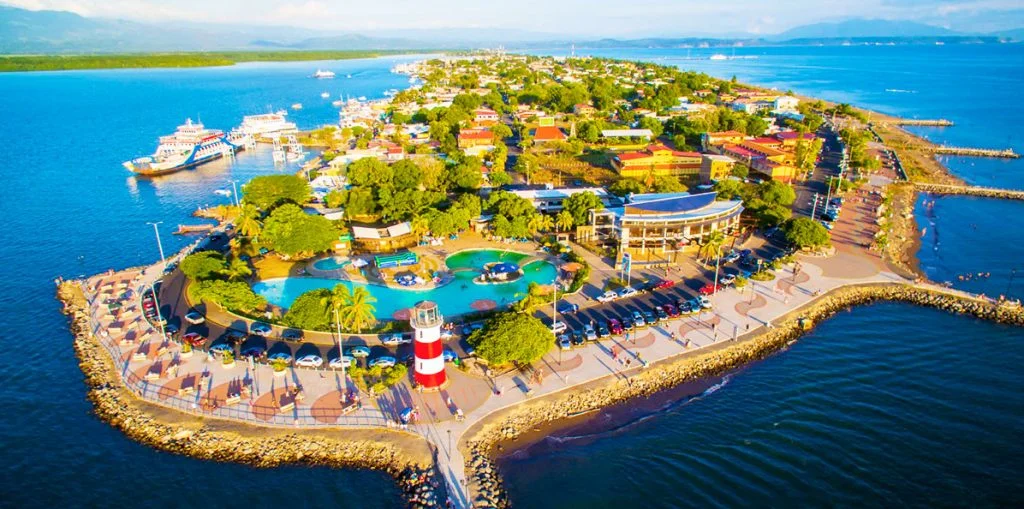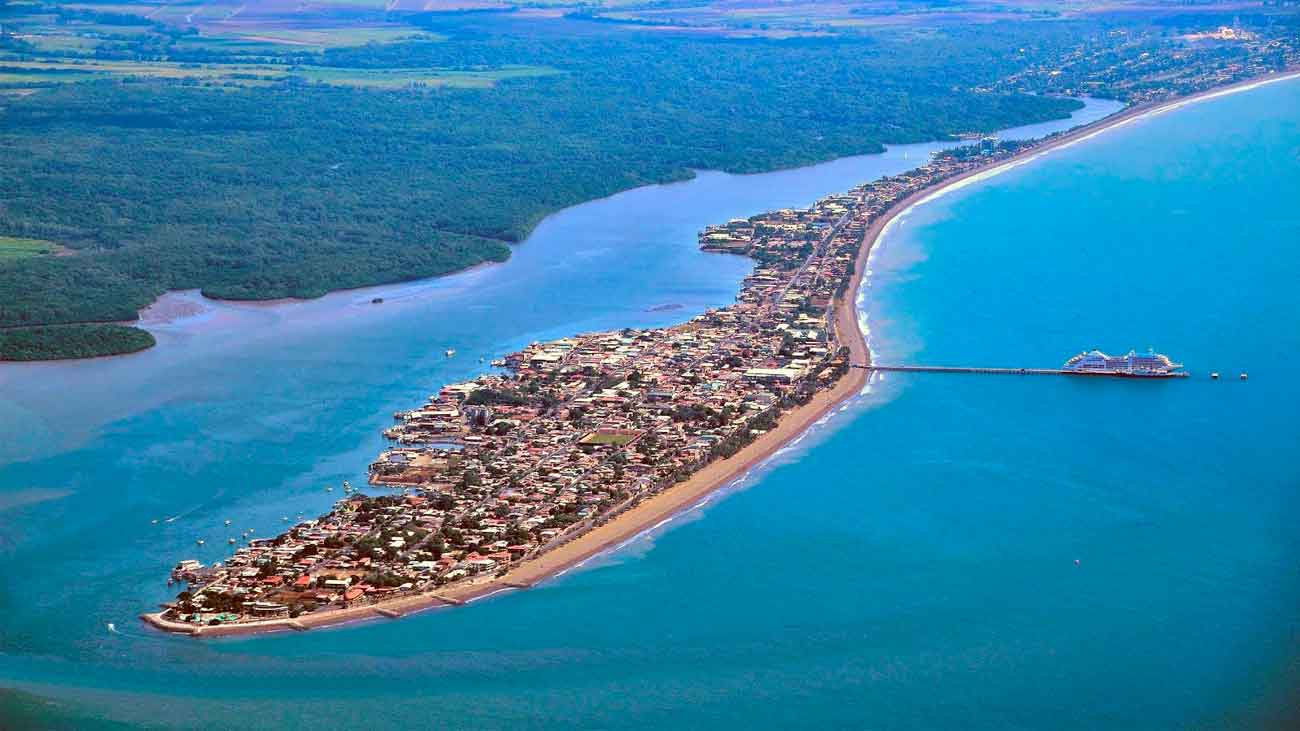



Puntarenas is a port town on Costa Rica’s Gulf of Nicoya. Its Casa de la Cultura is a cultural center with a theater and art gallery. On the main boulevard, Paseo de los Turistas, Parque Marino del Pacífico includes an aquarium and rescue center with seahorses, turtles and crocodiles. The town beach, Playa Puntarenas, is backed by shops and cafes. Southeast of town, Playa Doña Ana is a beach known for strong surf. ― Google
Dry Season (December–April) – Best for beach activities, sightseeing, and island tours.
Green Season (May–November) – Fewer tourists, lush scenery, and occasional afternoon rain.
Puntarenas City stays hot year-round: 27–35°C (80–95°F).
From San José (~1.5–2 hours):
By car: Via Route 27, a fast highway with scenic views.
By bus: Frequent daily buses from San José’s Terminal 7–10.
By ferry: From Paquera or Naranjo if coming from the Nicoya Peninsula.
Paseo de los Turistas – The town’s iconic oceanfront promenade with shops, eateries, and beach access.
Puntarenas Beach – Wide urban beach good for walking, sunbathing, and sunsets.
Museo Histórico Marino – Local maritime and cultural history inside a former jail.
Puntarenas Cathedral – 20th-century Catholic church built from stone and seashells.
Lito Perez Stadium – Catch a local soccer match if you want a taste of Tico sports culture.
Mangrove tours – Depart from the estuary near town, great for birding and wildlife.
Isla Tortuga – Popular full-day tour for snorkeling, banana boat rides, and white-sand beach lounging.
Monteverde Cloud Forest – 2.5–3 hours inland; a must for hiking, wildlife, and ziplining.
Carara National Park – 1 hour north; great for birdwatching and spotting scarlet macaws.
Tambor, Santa Teresa & Montezuma – Access via ferry and short drive; surf towns and waterfalls on the Nicoya Peninsula.
Jaco – A lively beach town just 1 hour away, ideal for surfing, nightlife, and adventure tours.
Stroll the Paseo de los Turistas – Especially at sunset when locals gather.
Try “Churchill” – Puntarenas’s signature sweet treat: a shaved ice with syrup, condensed milk, ice cream, and powdered milk.
Visit local markets – Buy tropical fruits, snacks, and crafts.
Boat to Isla San Lucas – Former prison island turned wildlife refuge with historic ruins.
Attend a local festival – Especially in February, with parades, concerts, and food fairs.
In Puntarenas City:
Puerto Azul Boutique Resort & Marina, Hotel Alamar, Cabinas Madeleine (budget-friendly)
Nearby beach resorts:
Consider staying in Playa Tambor, Santa Teresa, or Jaco for beach vacations with more activities.
Eco-lodges & nature stays available if exploring inland areas.
Seafood is king:
Try ceviche, fried red snapper, or shrimp in garlic sauce.
Where to eat:
La Yunta, Isla Coco’s Bar & Grill, PakaPaka Beach Bar, Restaurant La Casona
Sodas (local diners):
Great for traditional casados, gallo pinto, and homemade juice
Street food:
Empanadas, grilled corn, and the famous Churchills (get one from Paseo vendors!)
Puntarenas has deep maritime roots — once the country’s main Pacific port.
Life here is slow-paced and proud, with strong family and fishing traditions.
The city is less touristy than other coastal areas, so you’ll find a more authentic Tico vibe.
Festivals like the Carnaval de Puntarenas showcase local dance, music, and cuisine.
Base yourself elsewhere if you want beach luxury, but stay a night here for culture and local feel.
Use Puntarenas as a ferry port for trips to Nicoya Peninsula.
Stay hydrated and wear sun protection — it gets very hot and dry.
Be mindful at beaches — currents can be strong and not all areas are lifeguarded.
Visit early in the day — afternoon heat can be intense.